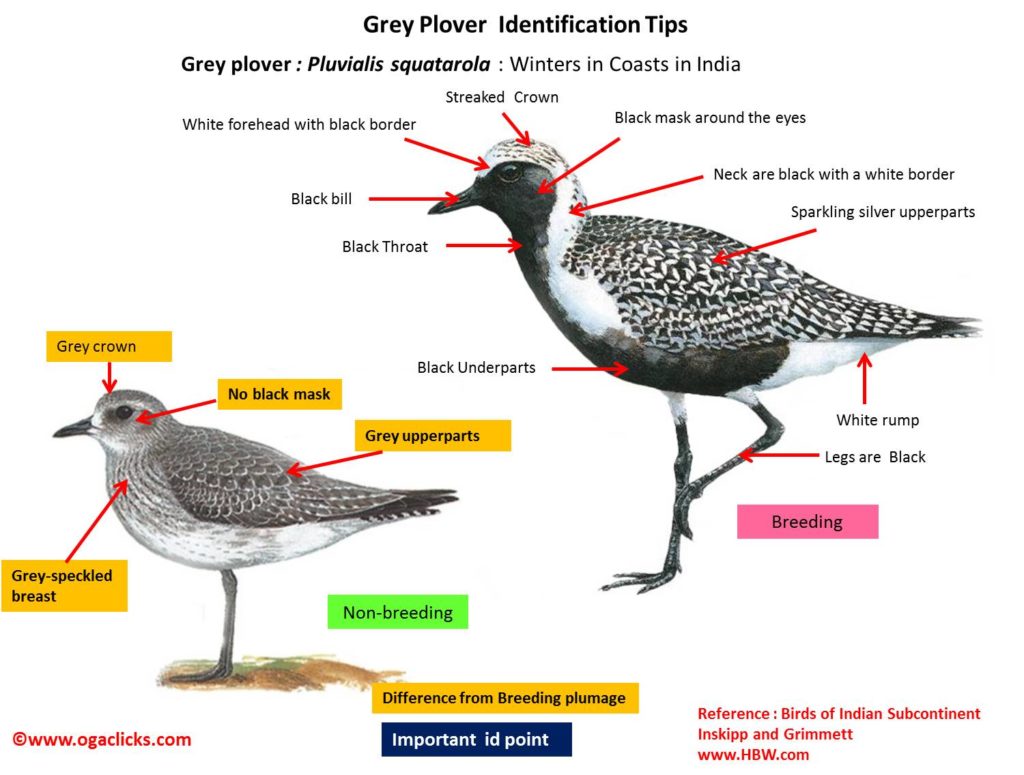
Grey Plover Pluvialis squatarola
Etymology:
- Pluvialis : Latin word for related to rain derived from pluvial – rain
- Squatarola: Venetian name for Plover
Vernacular Names: Hindi, Ben: Badabatan, Guj: Batanatitodi, Motibatan, Ta: Anathalaiullan, Mal: Chara plover, Mar: Rakhi Chikhlya
Distribution in India: Winter visitor in coastal region of India
Description: Size of 27–31 cm; 165–395 g; wingspan 71–83 cm. In breeding plumage , it has a sparkling silver upperparts with contrasting black underparts; black axillaries that are conspicuous in flight. It is larger, chunkier and much greyer than other congeners. The female has browner underparts than male, with pale flecking. The non-breeding adult lacks black of underparts; duller brownish grey above and dirty white below. The juvenile is like non-breeding adult, but upperparts are darker with pale yellow spots; and faint streaking on breast and flanks. It is unique among plovers in having a hallux.
Habitat: It is found in polar deserts to forest tundra, but commonest in Arctic tundra subzone. Typically found on dry hilly sites or on tundra with dwarf birch, sedges, moss and lichens in both upland locations and river valleys, with lakes and usually some snow and ice. In non-breeding season, on inter-tidal mudflats and beaches
Food Habits: They eat mainly insects and their larvae, such as beetles and other invertebrates; occasionally some grass seeds and stems. In winter, eats marine worms, molluscs and crustaceans; occasional insects, such as grasshoppers and beetles, and earthworms;.During foraging, sometimes exposes prey by making a sideways flick combined with a peck, sending a piece of mud into the air.
Breeding Habits:
They breed in May-June in Arctic islands and coastal areas across the northern coasts of Alaska, Canada, and Russia. They are monogamous, often for several years. Nest is a shallow scrape lined with small stones, moss and lichens, often sited on higher ground, such as ridge. They lay a clutch of 3-4 eggs. The incubation period is 26–27 days, done by both parents but mainly by male, sometimes perhaps starting before clutch is completed; Then lay only single brood, replacement clutch laid only if first fails very early on; chick tended in wet areas by both parents for 12–21 days, after which female usually leaves; fledging period is 35–45 days; young become independent just before or just after fledging